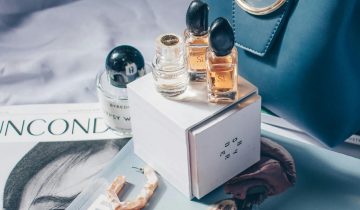Written by Jennifer Chien
Edited by Chiqio
Keywords: perfume bottle design, fragrance, history,brand identity
Perfume, a delicate curation of fragrant essences, has been an integral part of human culture for many years. However, the magnetism of a perfume extends beyond its scent. The design of its bottle is a crucial factor in creating a complete sensory experience that resonates with consumers on multiple levels. In examining the aesthetics of perfume bottle design, we uncover a rich creation of art, history, and psychology that influences how we take in and enjoy fragrances.
History and Evolution
Perfume bottle design has evolved drastically over the centuries. Ancient civilizations used containers made from materials like gypsum, glass, and ceramics. The Egyptians, for example, crafted bottles decorated with hieroglyphs and deities, which were often buried with the deceased to accompany them in the afterlife. During the Renaissance, intricate glass bottles emerged, reflecting the era’s fascination with opulence and craftsmanship.
In the 20th century, the perfume bottle became a canvas for artistic expression. Designers saw the bottle not just as a vessel, but as a fundamental part of the perfume’s identity. Brands like Prada and Dior transfigured the industry with designs that were both functional and emblematic of their brand’s ethos. Today, perfume bottles are not merely containers but are often collectible pieces of art.
Form and Function
The shape of a perfume bottle plays a vital role in its aesthetic appeal. Designers often draw inspiration from various art movements—Art Deco’s geometric elegance, Modernism’s minimalism, or even organic forms reflecting nature. The bottle’s shape can induce a range of emotions and associations, from classic sophistication to avant-garde innovation. For example, Carolina Herrera’s “Good Girl” was presented in a bottle designed to resemble a stiletto heel, emphasizing the perfume’ femme fatale aesthetic.
Furthermore, the design must balance form and function. A bottle must not only look appealing but also serve the practical purpose of preserving the fragrance and facilitating its application. The selection of materials, whether it be glass, metal, or even ceramic, affects both the aesthetic and the practicality. Glass, often used for its transparency, allows consumers to see the perfume and appreciate its color and texture, while also preserving the fragrance’s integrity.
Symbolism and Brand Identity
The symbolism rooted in a perfume bottle’s design can convey a story or elicit a specific image. For example, the iconic bottle of “Chanel No. 5” features a sleek, rectangular shape with a simple, clear label that emphasizes the perfume’s timeless elegance. The bottle itself becomes a symbol of luxury and sophistication, aligning perfectly with the fragrance’s reputation for years to come.
Branding plays an essential role in bottle design as well. The design must embody the essence of the perfume and reflect the brand’s identity. This is achieved through selections in color, shape, and ornamentation. For instance, the bold and sculptural bottle of “Dior Sauvage” aligns with its rugged, adventurous scent profile, while the delicate, floral design of “Gucci Bloom” speaks to its romantic and lush fragrance.
Psychological Impact
The aesthetics of a perfume bottle also taps into psychological aspects of consumer behavior. A beautifully designed bottle can create a sense of excitement and appeal, making the act of wearing perfume a more opulent experience. The bottle becomes a tactile object that consumers interact with, amplifying their connection to the fragrance.
Studies have shown that consumers often associate the visual appeal of a product with its perceived quality. A well-designed bottle can elevate a fragrance from a mere product to a cherished possession, contributing to brand loyalty and repeat purchases.
The aesthetics of perfume bottle design are a mesmerizing coagulation of art, history, and psychology. A perfume bottle is not just a container but a manifestation of the fragrance’s character and a reflection of the brand’s identity. Through design, perfume bottles serve as both practical objects and symbols of luxury, inviting consumers to explore and connect with the scents they desire. In this way, the design of a perfume bottle transcends mere functionality, becoming an essential part of the sensory experience of fragrance.



 No products in the cart.
No products in the cart.